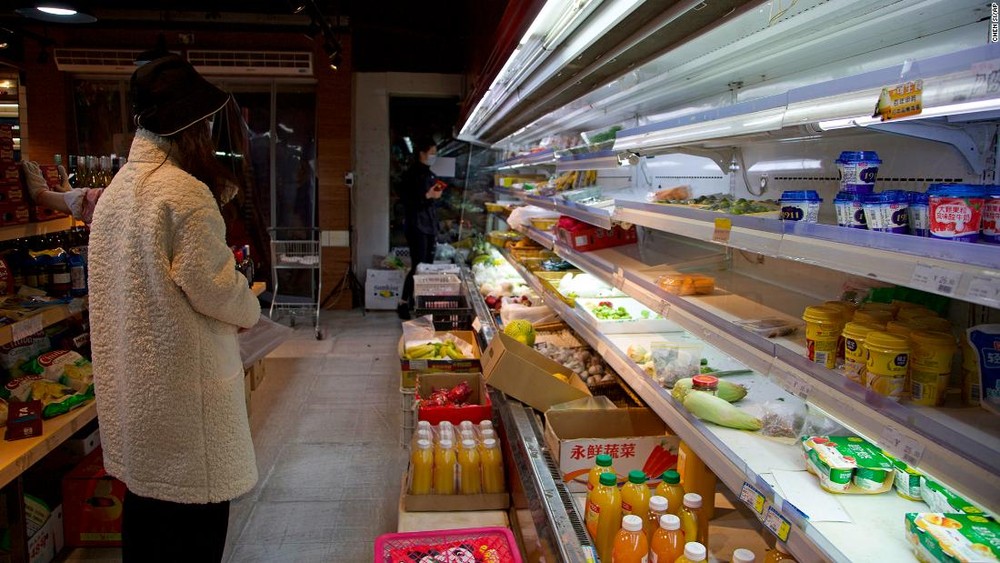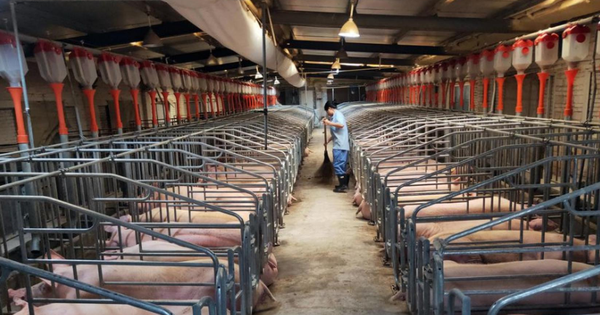The biggest risk to the global economy
Nearly 400 million people across 45 Chinese cities are under complete or partial lockdown under the country’s zero Covid policy. All represent 40% of the annual GDP, or $7.2 trillion, of the world’s second-largest economy, according to data from Nomura Holdings.
Analysts are sounding the alarm bells. They say investors are underestimating the severity of the global economic downturn from this prolonged lockdown.
Lu Ting, chief economist at Nomura, and colleagues note: “Global markets have still underestimated the impact, because of the Russia-Ukraine conflict and interest rate hikes by the US Federal Reserve. attract more attention”.
Most alarming is the indefinite blockade in Shanghai, a city of 25 million people and one of China’s leading manufacturing and export hubs.
Quarantine leads to food shortages, inability to access medical care, and even documented pet abuse. Shanghai also left the world’s largest port with a shortage of workers.
The port of Shanghai, which will handle more than 20% of China’s cargo traffic in 2021, is essentially at a standstill. Food supplies are stuck in containers that haven’t been delivered to the freezer and are rotting.
Currently, imported goods are stuck at Shanghai seaports for an average of eight days before being shipped elsewhere. This is a 75% increase since the new blockade began.
According to the supply chain visualization platform project 44, the storage time of exports has been reduced. But that means no new containers are sent to the docks from the depots.
Airlines have canceled all flights to and from the city. More than 90% of trucks supporting import and export deliveries are currently inactive.
According to the 2021 government statistical yearbook, Shanghai produces 6% of China’s exports. The closure of factories in and around the city is further disrupting the supply chain.
Sony and Apple’s supply plants in and around Shanghai are both closed. Quanta, the world’s largest maker of laptops and a maker of MacBooks, has stopped production altogether. This factory accounts for about 20% of Quanta’s laptop production capacity. Previously, the factory was estimated to ship 72 million units this year. Tesla has also closed its factory in Shanghai, which makes about 2,000 electric cars a day.
China’s Ministry of Industry and Information Technology said on April 15 that it had sent a task force to Shanghai to work, with plans to resume production at 666 key manufacturers in the city. blocked off.
Tesla CEOs hope they will be allowed to reopen on April 18, ending the factory’s longest shutdown since opening in 2019. According to Reuters, the automaker has lost more than 50,000 pieces so far.
Mr. Michael Hirson, Eurasia Group’s head of China and Northeast Asia said: “China has had a big impact and the impact on the global economy is quite large. I think we’re going to have a lot of ups and downs. as well as economic and social disruption for at least the next six months.”

A new threat “logged in” appeared
Prolonged disruptions in Chinese manufacturing and shipping could prompt the United States to take an important initiative to reduce America’s reliance on Chinese products and supply chains. But this initiative comes with serious immediate economic consequences.
In a report released last week, the World Trade Organization (WTO) warned of a worst-case scenario involving global economies being torn apart by the war in Ukraine. Global GDP could fall 5% in the long run.
This is unlikely given the deep financial ties between the US and China. According to data from the Rhodium Group, the two countries’ investments in each other’s stocks and bonds reached $3.3 trillion by the end of 2020.
“These are still very intertwined economies,” Hirson said. “Integrating isn’t something that can be changed easily, because it would be extremely costly for the US and for the global economy to do so,” Hirson said. “.
However, American economic leaders believe that the process of decoupling has already taken place. Marks, wrote at the end of March that: “The shift has turned towards local sourcing and away from globalization”.
Blackrock Chairman Larry Fink reiterated this situation in a letter to the company’s shareholders. “The war in Ukraine has put an end to the globalization we’ve experienced over the past three decades,” he wrote.
In a speech to the Atlantic Council last week, US Treasury Secretary Janet Yellen said the US was closely monitoring China’s political and economic links with Russia. “In the future, it will become increasingly difficult to separate the economic issue from the larger issues of national interest, including security,” Yellen said.
Meanwhile, a third of China is stuck in lockdown and its economy is struggling.
According to research from the University of Hong Kong, China could lose at least $46 billion in economic output per month, or 3.1% of GDP.
Analysts no longer believe China’s 5.5% target by 2022 will materialize. That is arguably the country’s least ambitious goal in three decades.
The World Bank has revised its estimate of China’s economic growth to 5%, but noted that if the country’s restrictive policies continue, the figure could fall to 4%.
Reference: CNN
at Blogtuan.info – Source: Soha.vn – Read the original article here



